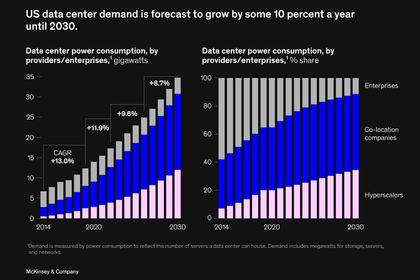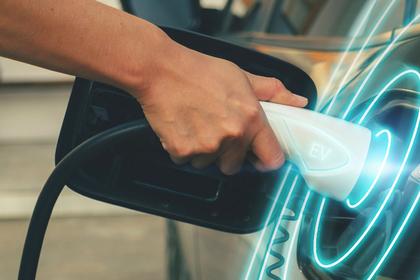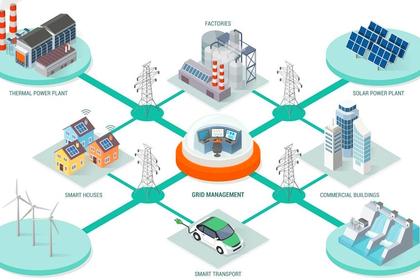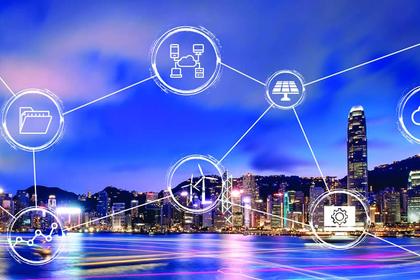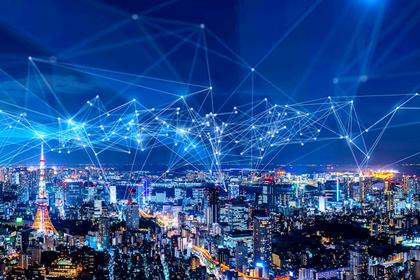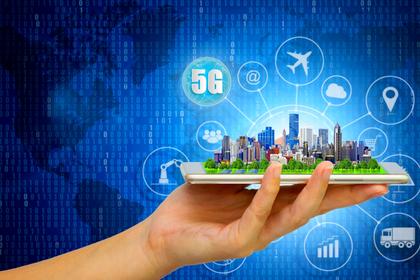
ENERGY INFRASTRUCTURE CHANGES

Program Director and Professor, Atria University, Bengaluru (India)
ENERGYCENTRAL - May 14, 2024 - For decades, the electricity grid has been a one-way street. Consumers use power, and distribution companies (DISCOMs) manage the infrastructure. But a new approach is focusing on empowering consumers to become active participants in the power grid. This concept goes beyond simply reducing electricity use during peak hours. Imagine a future where consumer /community could lease a transformer, own a battery storage system at home, or even manage your own electric vehicle (EV) charging station. At present, DISCOMs own and maintain transformers, which are crucial for regulating voltage throughout the grid. The new proposal suggests DISCOMs could offer leasing options or allow communities to co-own various components of distribution network infrastructure. This would incentivize responsible energy use and potentially lead to better maintenance practices.
Consumer involvement in distribution network operations will be beneficial for both consumers and Distribution Companies (DISCOMs). Being responsible for managing distribution network infrastructure including transformers, EV charging stations or battery storage, communities can effectively flatten the load curve, reducing peak demand and support for stable grid operations. This not only enhances grid reliability but also believes the potential to lower electricity bills for consumers. Consumer ownership or leasing of infrastructure incentivizes proactive maintenance practices, resulting in increased efficiency and fewer outages. Additionally, owning battery storage enables communities to store surplus renewable energy, facilitating the integration of distributed energy resources including solar/wind power, mini/micro hydro etc. with the distribution networks. Empowerment of consumers to manage their own EV charging stations contributes to the development of micro and nano grids, granting individuals greater control over their energy usage. In spite of these advantages, there is need to develop consumer centric framework to overcome the challenges. Regulatory frameworks must be aligned to accommodate consumer involvement in grid management and focus on organize capacity building programs to educate consumers on safe and effective system management approaches.
Empowering consumers in grid management isn't just about handing over Distribution network infrastructure. It's about fostering a collaborative approach to a more resilient, efficient, and sustainable energy future. With the collaborative approach, DISCOMs and consumers can transform the power infrastructure into a two-way street.
The proposed shift towards consumer involvement in grid management could also open doors for Independent Power Producers (IPPs). Currently, IPPs typically generate electricity and sell it to DISCOMs for distribution. In this new landscape, IPPs could potentially partner with communities or individual consumers. For example, an IPP with a solar/Wind plants could offer leasing options for battery storage units to residents, allowing them to store excess energy generated. This collaboration could provide consumers with greater control over their energy use and potentially lower electricity bills, while IPPs could find new revenue streams and expand their customer base.
Consumer-owned infrastructure offers substantial cost savings for both consumers and utilities by reducing reliance on external providers and optimizing infrastructure investments, potentially lowering electricity tariffs. Assets like EV charging stations and battery energy storage systems generate revenue through service fees, energy sales, and grid support services, compensating initial investments and providing ongoing financial benefits. Incentive programs, such as financial incentives or time of use tariffs, encourage consumer participation. Revenue-sharing mechanisms ensure equitable distribution of financial benefits, while financing options like low-interest loans / crowdfunding facilitate consumer investment. Risk mitigation strategies, like insurance products or performance guarantees, minimize financial risks associated with consumer-owned infrastructure. This inclusive approach encourages a financially viable and sustainable consumer participation model in distribution network infrastructure management.
-----
This thought leadership article was originally shared with Energy Central's Grid Professionals Community Group. The communities are a place where professionals in the power industry can share, learn and connect in a collaborative environment. Join the Grid Professionals Community today and learn from others who work in the industry.
-----
Earlier:
